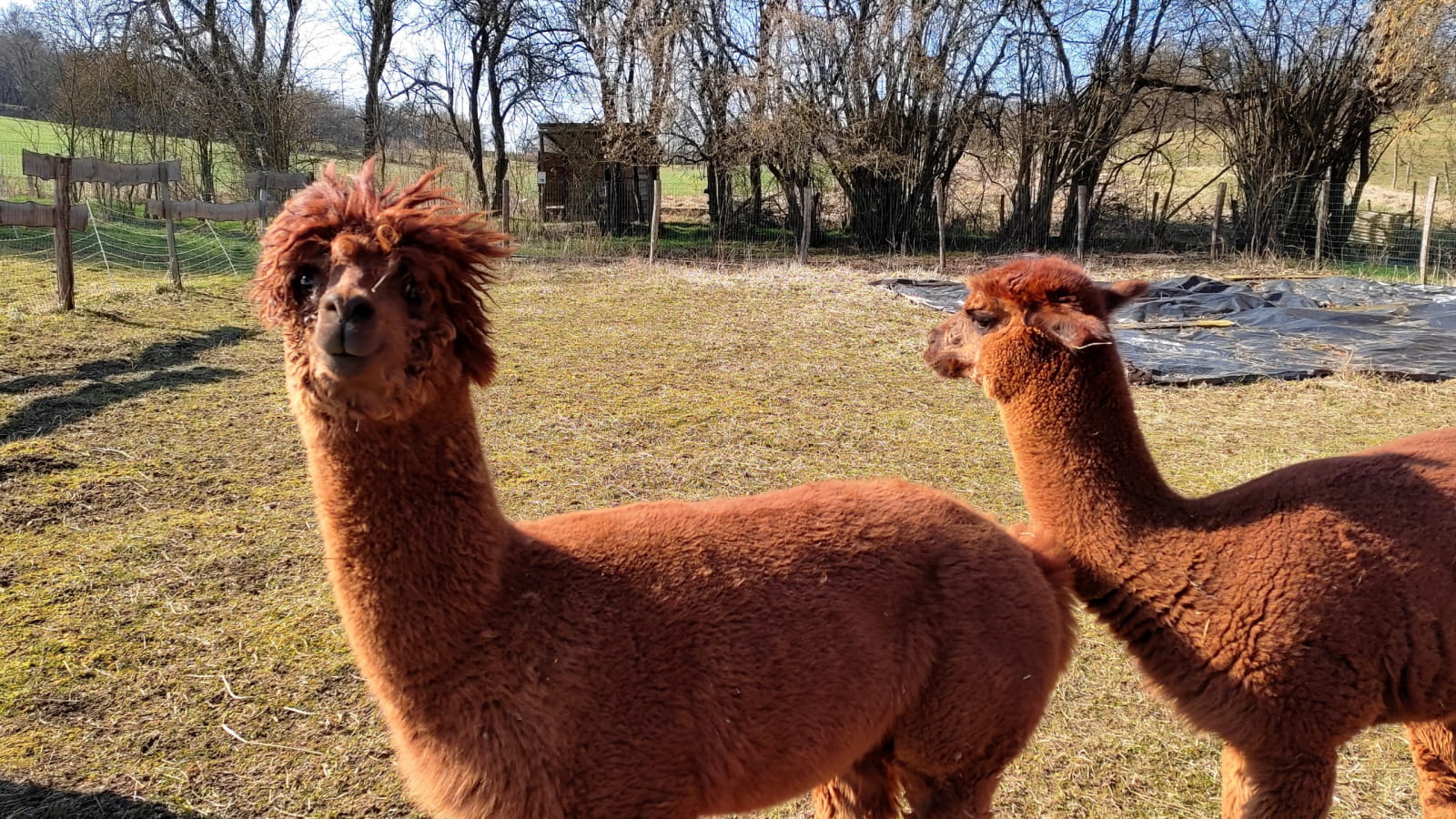
Farmer for a day in the Contrées des Minis
Accompanied by Marie and Alexandra, we headed for Hilbesheim, about ten minutes from Sarrebourg.
We had the privilege of previewing the new ‘farmer for a day’ event on a March morning.
The sky was blue, but the wind was bitterly cold, but that didn't dampen our spirits! We put on our boots, adjusted our hats and gloves and Franck Sasso, the association's president, welcomed us. After a quick introduction, we enter the main building.



We're eagerly awaited by the animals, and with good reason - breakfast hasn't yet been served! The rodents squeak and fuss. The dwarf rabbits and guinea pigs quickly let us know that this is no time for chit-chat:
they're hungry!!!

Their first task was to check the water level in their ‘feeding bottle’ (a plastic bottle with a metal neck and a ball at the end). The guinea pigs' bottle was empty. Franck tells us that guinea pigs need vitamin C, which comes in liquid form. Using a pipette, we measured out the amount he had given us and put it in the water. Then it's on to the food. We cut various vegetables into strips or chunks and add pellets and hay.
It was a great success !
We did the same thing again for the ram rabbits (with their ears falling off) and other guinea pigs, who were in hutches a little further away, and surprise! Two female guinea pigs have had babies, and there's a lot of running and waving about. Franck explains that even though the babies are very small, they already eat like adults - it's impressive !
After feeding the rodents, we move on to the next size up: the dwarf pigs. There's a bit of tension in their pen. The lady pig has had babies, and we can see a few little bits of pink in the straw, but we don't want to disturb them. Franck explains the pigs' diet and how the female's behaviour has changed since the arrival of her babies. Mr Pig is tolerated, as long as he stays in his corner. Who said ‘pig temper’?
We put up some straw and hay and Mrs Pig takes the opportunity to redecorate straight away.


Without a moment's pause, we move on to the feathered barnyard animals.
There are colourful hens and roosters! After feeding them, we give them access to the outside. Astonishment! As well as the usual food, we give them crushed oyster shells! As a city girl, I was stunned. Since when do we feed the chickens the leftovers from the New Year's Eve seafood platter? Franck explains that it's an important source of calcium, which boosts the hens' immune systems and improves the quality of the eggshells.




After this interior interlude, we head out with wheelbarrows full of hay, towards the enclosure of the dwarf goats and the miniature zebu.
The big job of the day (which will be different every time) will be to clean their house. Our first task is to move Romulus and Remus, the two little billy goats. Frankly, the expression ‘to be as stubborn as a goat’ should be changed to ‘to be as stubborn as a billy goat’ ! They're not very cooperative, but that's part of the game. With a lot of patience, we moved them to another enclosure while we cleaned up. Remille, the dwarf goat, is not at all happy to be separated from her friends. Being with Rhéa the zebu is fine, but being with goats is much better! A big pile of hay near her snout later, silence has returned. And here we are in action with shovels and metal scrapers. As we went along, we removed the straw, the poo (let's call a spade a spade) and a layer of sawdust used as bedding. It's quite a job! We put everything back in order and very quickly Remille and Rhéa come to check that the work has been done properly - we're in their home after all !
We finish our training as farmers by visiting the other outdoor areas, the storytelling square, the future educational beehive, the educational garden, the sheep and donkey enclosure and we finish with the two stars of the Contrée des Minis: Merry and Pippin, the alpacas. They're so cute !!!! We're completely smitten. One of them has a rather sensible cut, but the other could be in an alpaca boyband. Their wool is so soft, as are their looks. You'd think they had false eyelashes.




After all that work, we've earned our snack!
All the products are local. We chose apple/quince juice and chestnut flour cakes produced by a local mill.
Throughout our morning there, we met the volunteers from the association. They look after the animals and, on this particular day, the vegetable garden. We were able to see how a grelinette works. This tool, fitted with long teeth, is used to work the soil without turning it over. This respects the different layers of the soil and preserves the micro-organisms that live there.
In short, if you're looking to learn more about animals and life on an educational farm while getting your hands dirty, this activity is for you!










